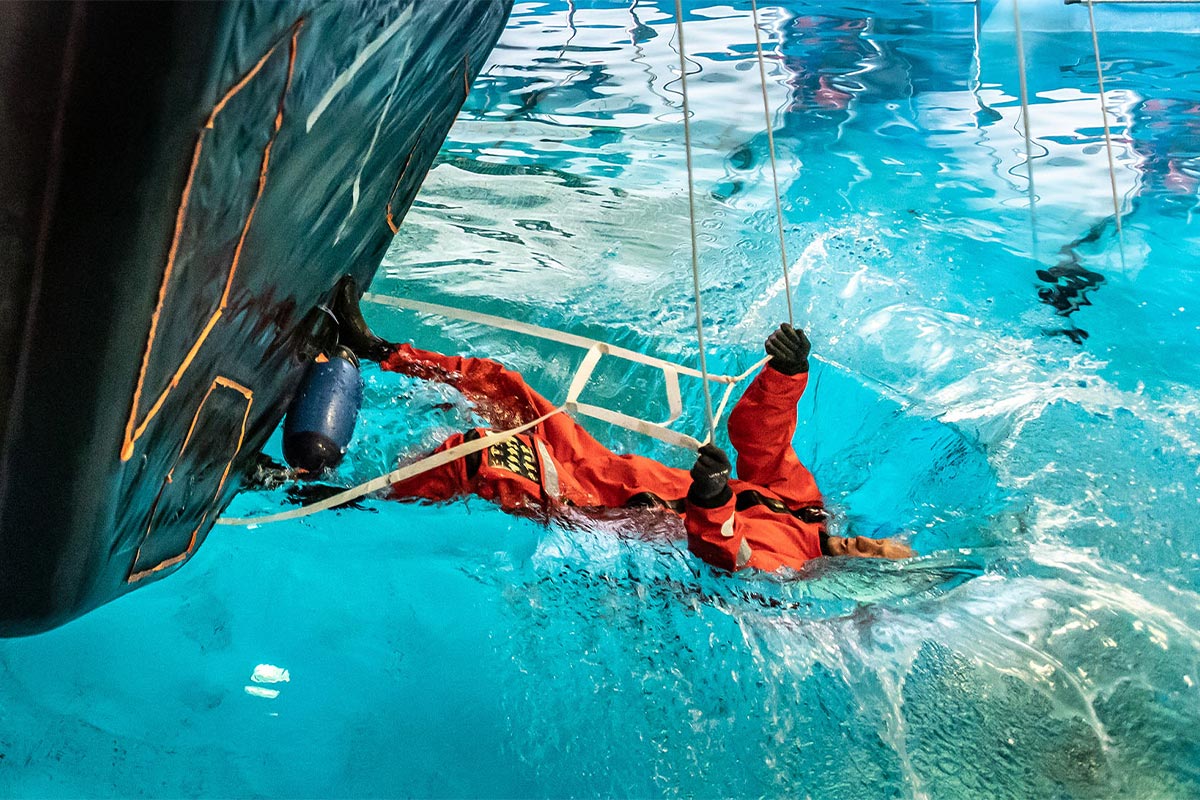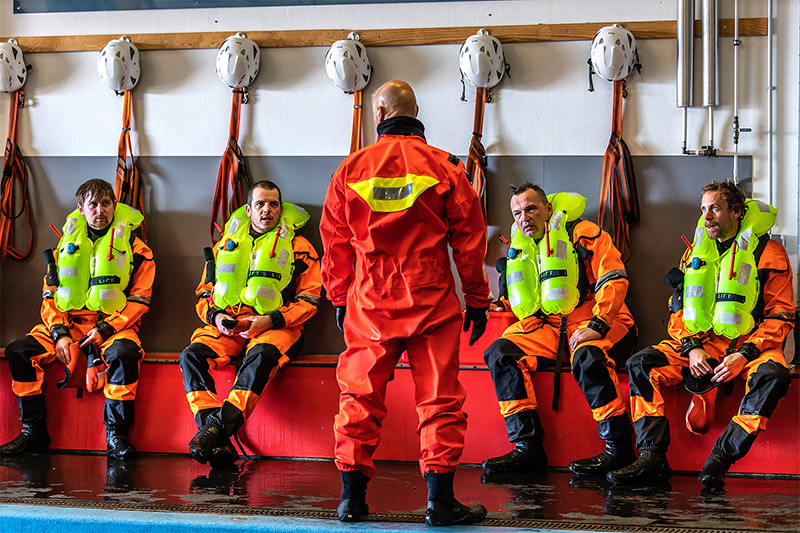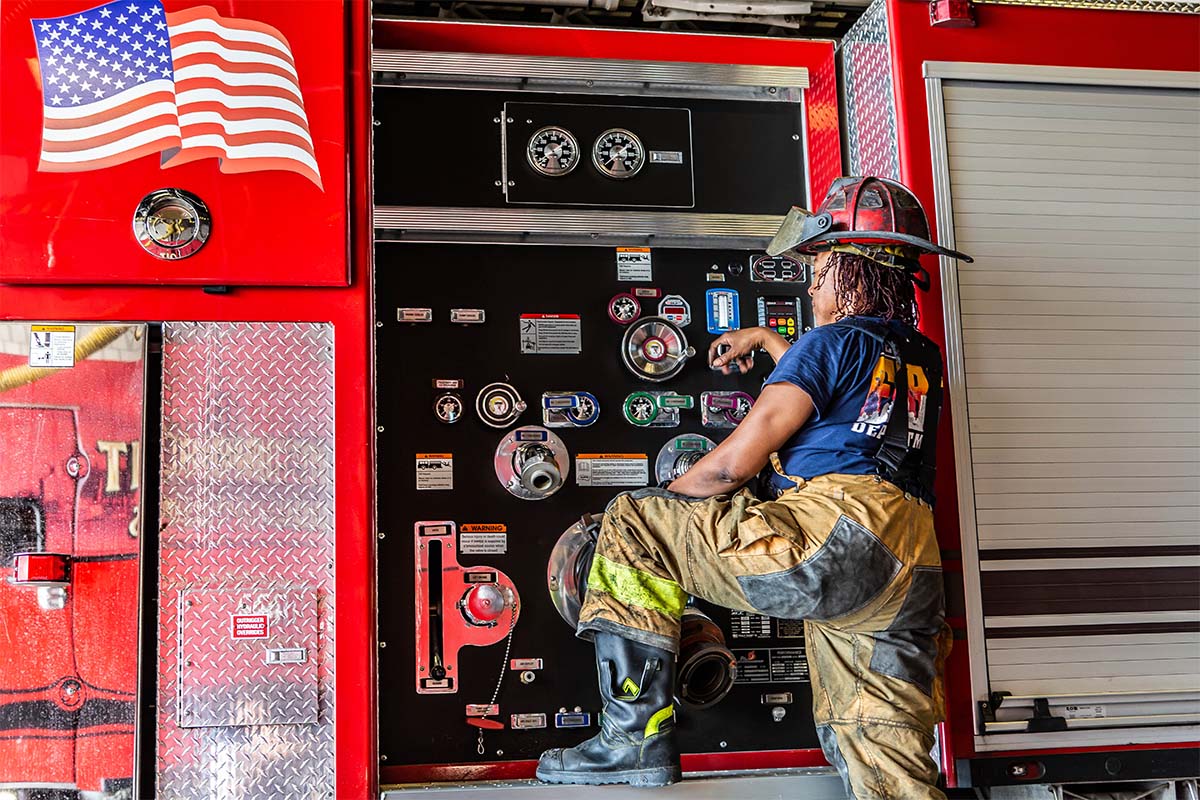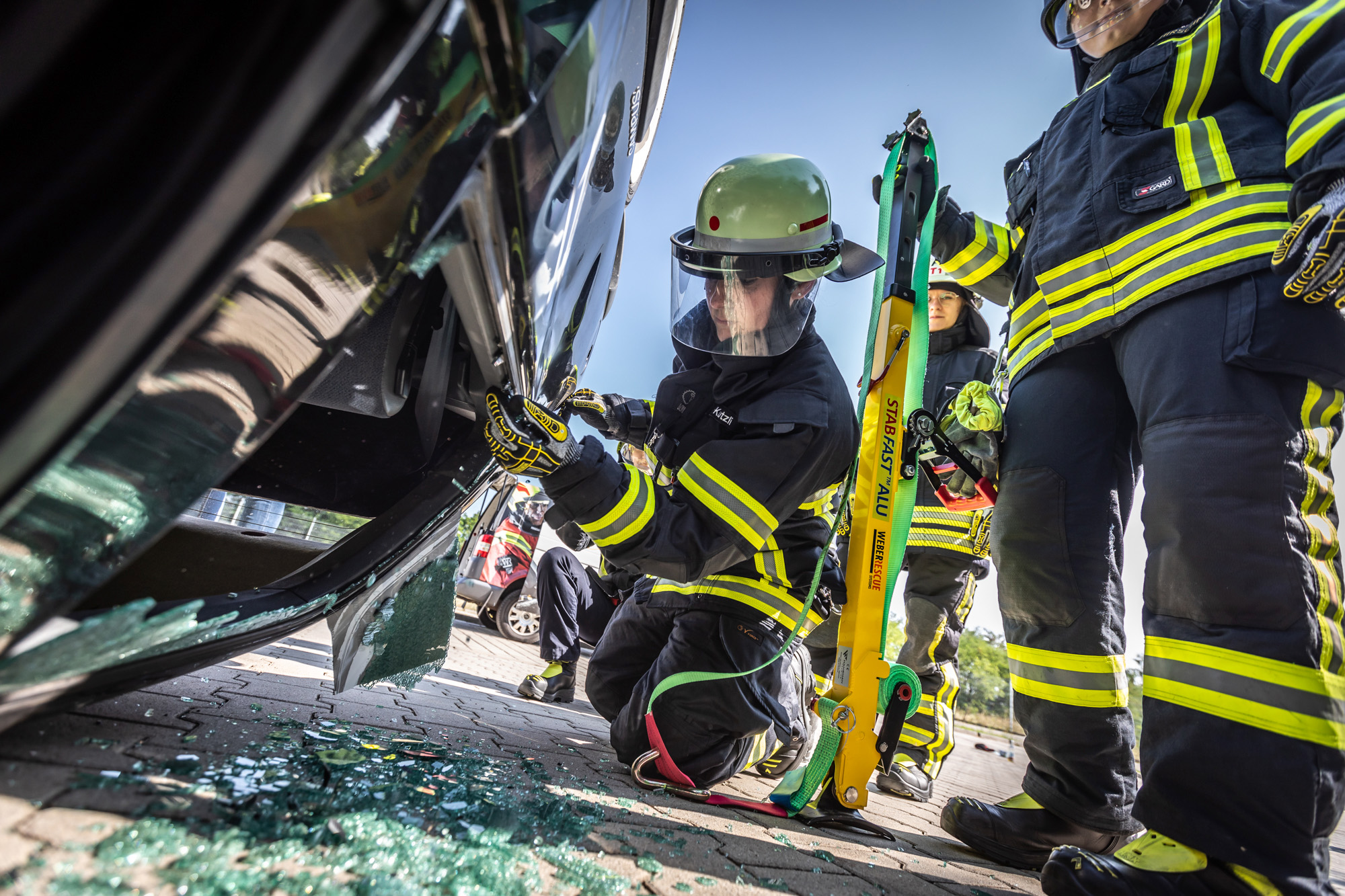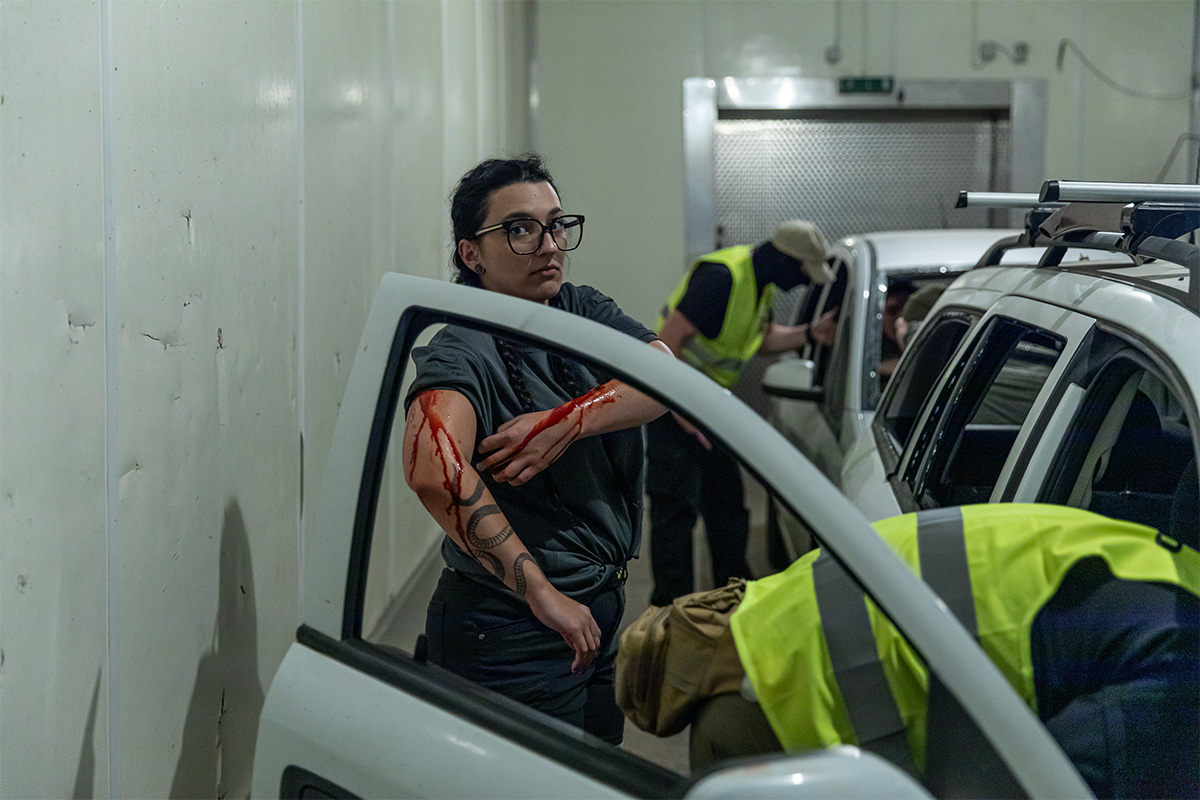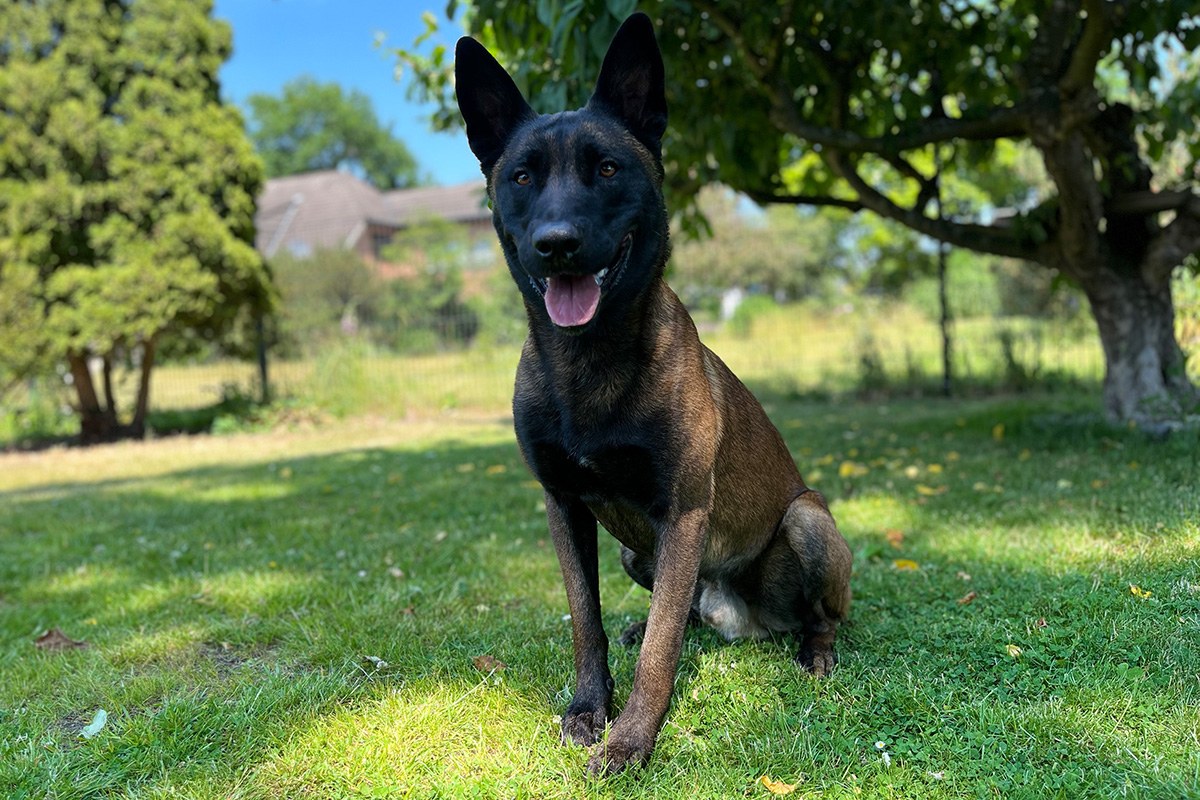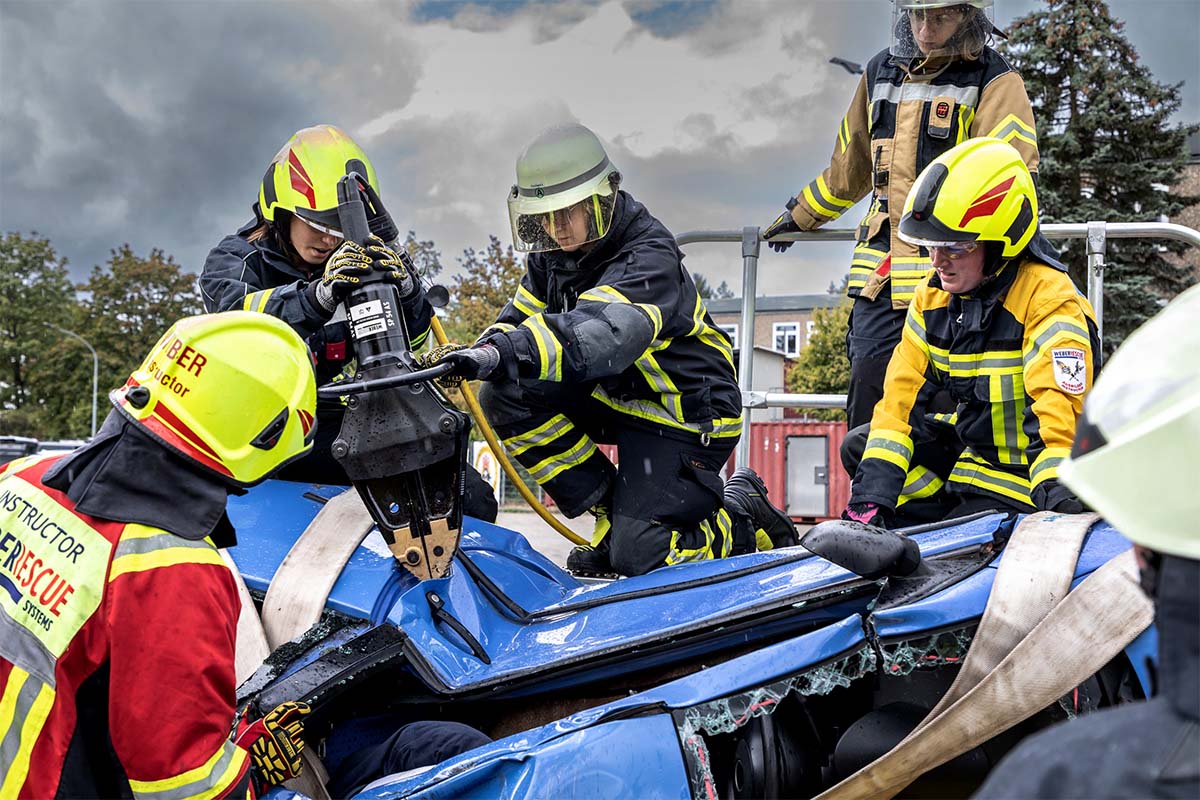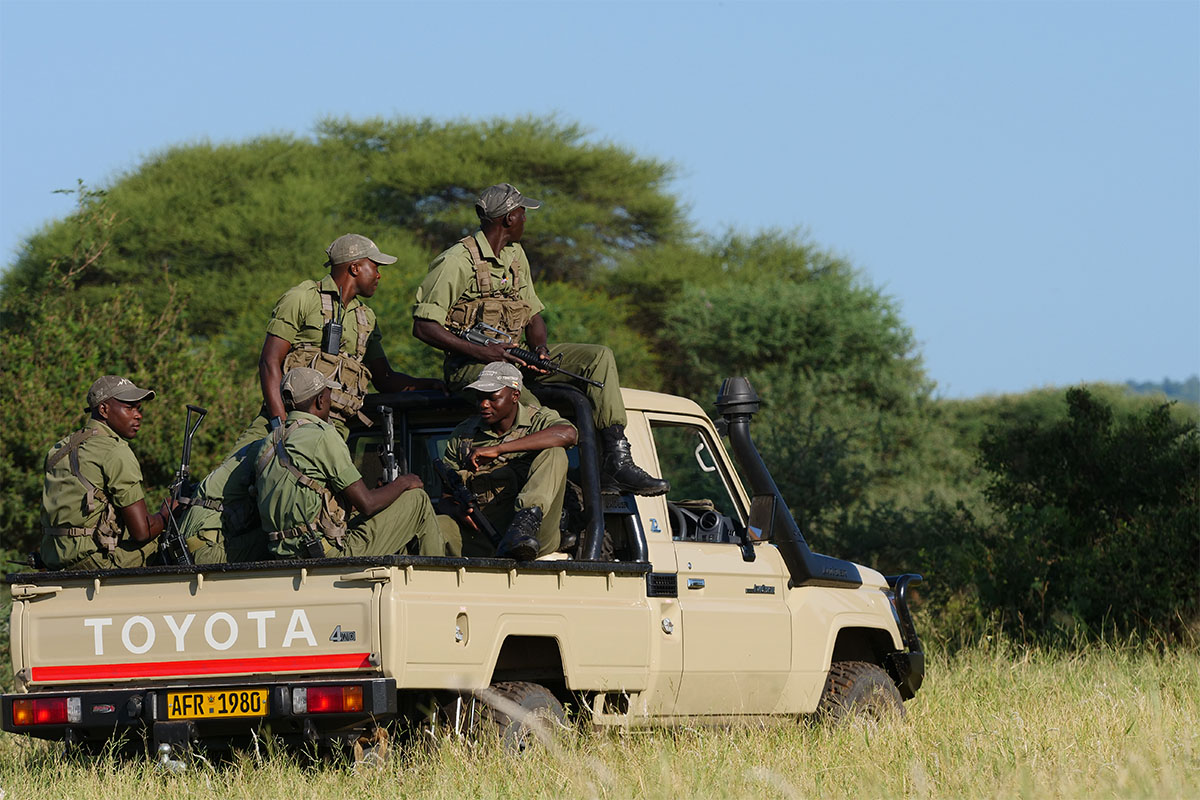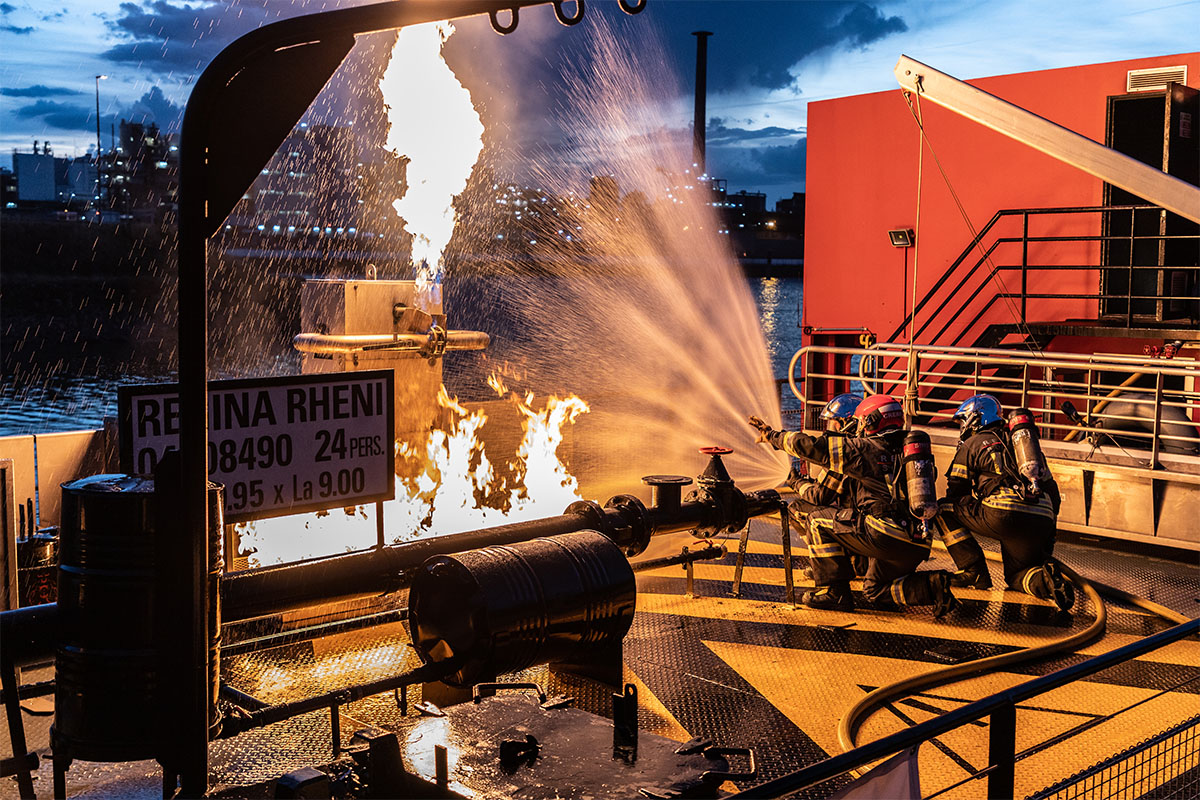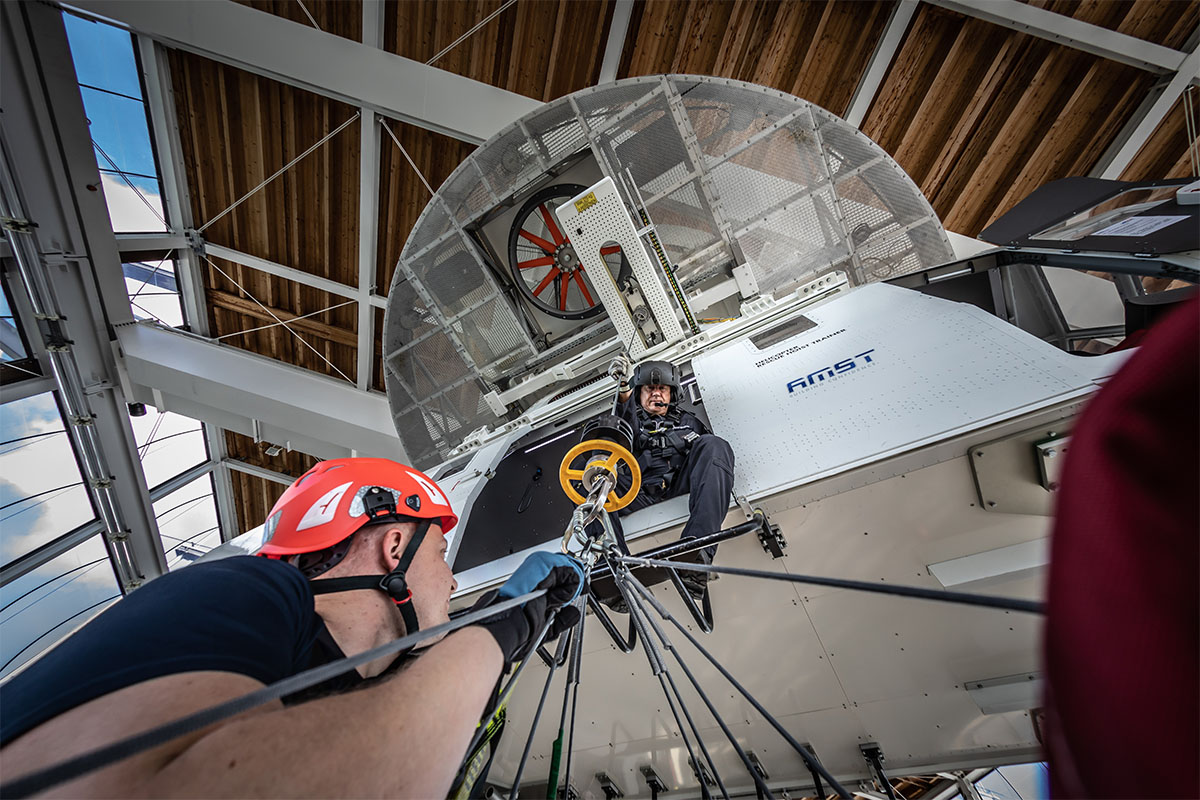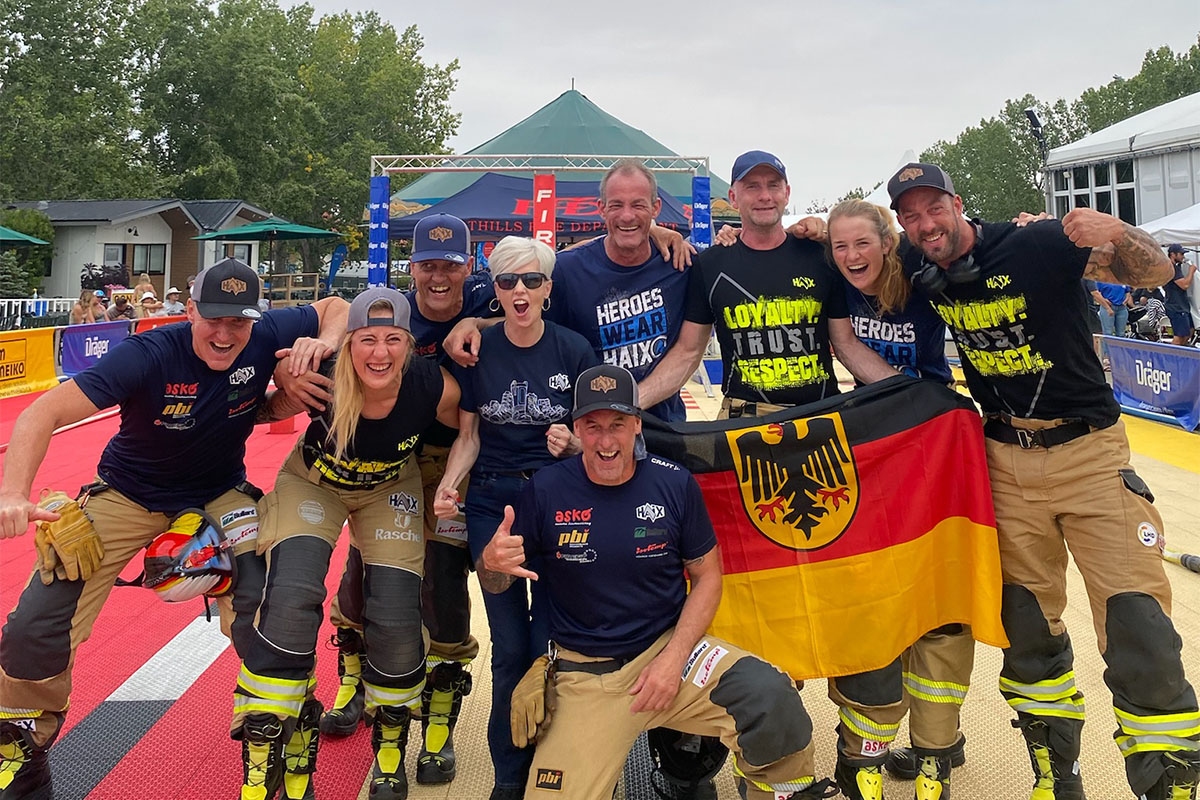The front of the training helicopter is adorned with the “Horizons” logo of the German Aerospace Center. Below in white lettering is the signature of Alexander Gerst, Germany’s most prominent astronaut. The renowned Alfred Wegener Institute houses the Helmholtz Center for Polar and Marine Research. Alexander was here for helicopter underwater escape training. “A really great guy,” says Thorsten, who works at the RelyOn Nutec-Center in Bremerhaven and was responsible for delivering his instruction. Alexander Gerst is one of 7,500 course participants who attend the center each year to undergo training on how to deal with the types of risk situations which can occur under and on water, on platforms, at wind farms, alongside the ship walls of ocean liners or when carrying out rescues at height.
Alexander was not just practicing for his next mission to the International Space Station. Before COVID-19 took hold, the plan was that he would spend the winter amidst the Arctic ice on the “Polarstern”, a German research ship. In Autumn 2019 the German research icebreaker “Polarstern” (“Polar Star”) drifted through the frozen Arctic Ocean. Its mission forms part of the largest Arctic expedition ever launched. Scientific researchers from 20 nations were involved in monitoring events in the Arctic over the course of the year. They were forced to spend the winter in a region which is virtually inaccessible once the Polar Night descends. The force of nature which the ice drift represents is the only thing which affords them this unique opportunity. Their research camp on an ice floe served as the basis for a network of measurement stations which extends for many kilometers.
The goal of the expedition was to gain a better understanding of the influence which the Arctic exerts on the global climate. There is scarcely another region which has warmed up more over the past decades. The expedition is considered to be a milestone of climate research. Important data that will be of relevance for generations. Whilst the team is pursuing this extreme route, its needs are being served by an international fleet of icebreakers and helicopters.
Theory beforehand is one thing
Gerst also made sure that he would be ready to face any extreme case or emergency situation by training how to get out of a helicopter underwater following a simulated crash. “Anything like that is possible here,” says Thorsten as he swings the training helicopter torso over the center’s six-meter deep indoor basin. Four men are seated in the simulated aircraft, full of anticipation. There is a big splash. Once in the water, the training helicopter immediately sinks and revolves vertically around its own axis. The cockpit is flooded in seconds. The crew find themselves hanging upside down with their seat belts still fastened. The main thing now is not to panic. Releasing a seat belt in such a situation whilst remaining calm is a feat which needs to be practiced. “Theory beforehand is one thing,” says one of the participants, who works for Siemens. “But actually performing it in reality is quite another.” He feels he has learned a lot. “It was an important experience.” Two rescue divers are on hand to monitor events and to make sure the session proceeds safely at all times.
Drowning Man
The RelyOn Nutec Center is one of the leading training providers for such emergency situations. “We offer safety and survival training, mainly to support the onshore and offshore wind industry,” states Jan Malstedt, Operations Manager at RelyOn Nutec. We are sitting in front of the company’s building at the commercial harbor. The artificial harbor basin, constructed in the 18th century to compete with Bremerhaven’s old port facilities, lies at our feet. Opposite is the Alfred Wegner Institute, the AWI, which was named after the man who discovered continental drift theory. An experienced team of trainers works with around 7,500 participants every year. Many clients are involved with seafaring, industry and the oil and gas sector. The ultra-modern training center boasts its own plunge pool and indoor climbing hall and is packed with state-of-the-art equipment. High-tech simulators and devices offer the participants a training experience which is as realistic as possible whilst also ensuring a safe environment.
Later on in the day, a group ventures out into the neighboring harbor basin by boat. “Man overboard!” comes a cry from portside. The next part of the training is to instigate a rescue maneuver immediately. One participant keeps a close eye on the sinking dummy, whilst the skipper makes a wide turn to starboard to approach the “drowning man”. The life belt is dropped into the cold water of the harbor. The dummy is pulled in and rolled up like a biscuit in baking paper once back on board. Maneuver complete! A successful rescue! An astounding achievement, even if people know what to do and are able to use the boat’s equipment properly.
Double safeguarding
But what if no such equipment is available? The trainer explains that other rescue techniques also exist and waves everyone over to portside. “Lean overboard until the wall of the boat almost touches the water and then haul him in,” orders Thorsten. “No need to worry. A boat like this is very robust and won’t capsize easily.” The only time this technique should be avoided at all costs is when the waves are very high.
Next training session. Docking at the offshore platform and safely exiting the boat at a height of 10 meters. The meaning of “double safeguarding” needs to be clear in such a situation. A steady hand is needed. “This is important in order to make sure you are doing the right thing at the crucial moment,” says Thorsten. RelyOn Nutec imparts knowledge like this on a daily basis. The institute and its team of trainers are certified in accordance with virtually every relevant criterion and standard. The offshore industry, health and safety at work specialists, the German Federal Agency for Technical Relief, fire brigades and even prominent astronauts all put their faith in these training units.
